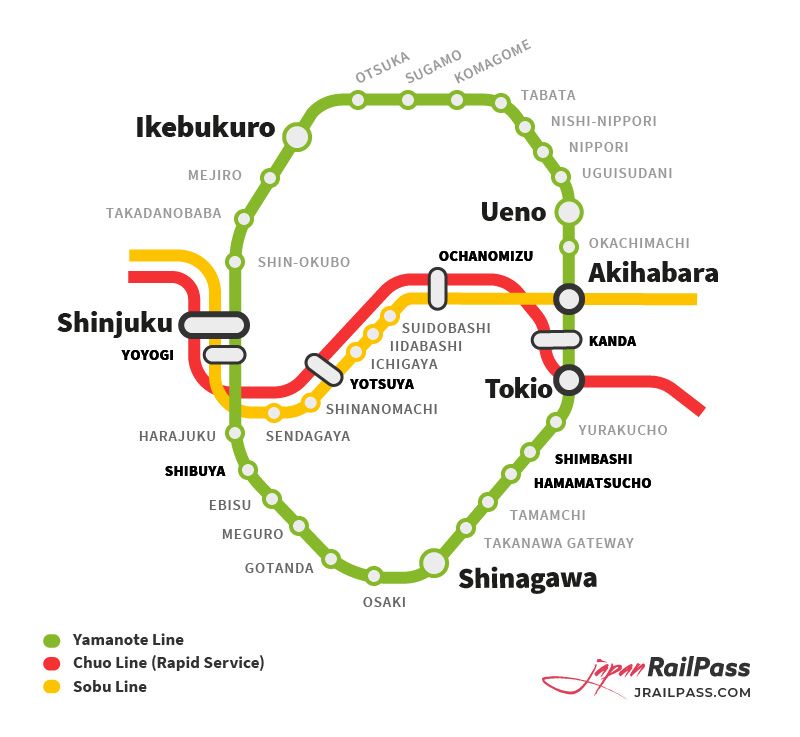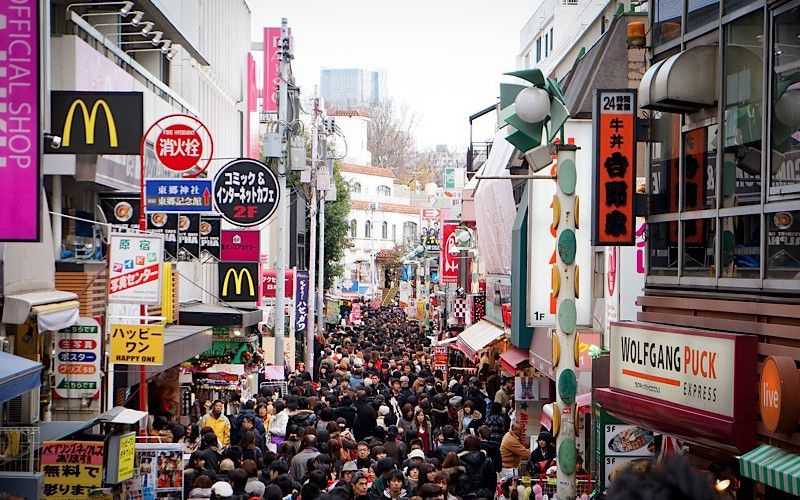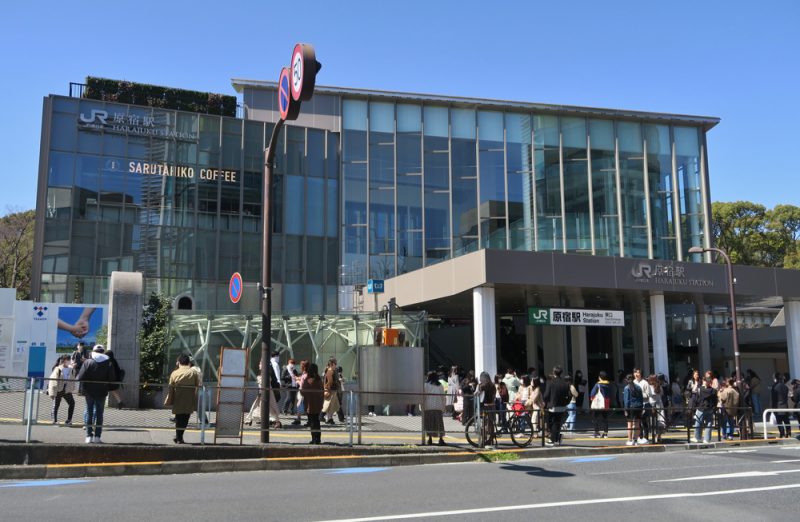Harajuku Station is located in the Shibuya area of Tokyo, Japan. It derives its name from Harajuku, a fashion and shopping district that lies to the east of the station. Harajuku district has been called “the center of Japan’s most extreme teenage cultures and fashion styles.” It draws youths not only from across Japan but from around the world.
Harajuku Station first opened in 1906 and the original structure offers a unique alpine facade. However, it has recently undergone renovations to include a state-of-the art new building. Today, it is the sixth-busiest station operated by JR East.
If your travels in Tokyo with the JR Pass will be taking you through Harajuku Station, you can use this handy travel guide to plan your trip to the district.
Table of Contents
Harajuku Station Layout
The exterior of the original Harajuku Station building displays a unique European alpine style, complete with dark wooden beams contrasting a creamy background.
It can still be viewed from the outside, though it has now been closed because the wooden structure does not meet modern fire safety guidelines.
Although now situated in a new building, the new Harajuku Station is situated just down the street from the old structure, and basically maintains the same location.
It also basically maintains its original two entrances and exits. The station’s main entrance leads out towards Omotesando, while a smaller entrance leads out to the Jingu Bridge (towards Meiji Jingu Shrine) and Yoyogi Park.

New Building
The new Harajuku Station located directly across from the With Harajuku shopping complex, which is still under construction and will include the first ikea in central Tokyo.
The new building is an impressively modern structure that lets in a huge amount of natural light and offers much more space for commuters across 2 floors.
The new station, which was built in time for the Tokyo 2020 Olympics, comes complete with a NewDays store which sells Harajuku-themed merchandise. On the second floor, commuters are able to relax in the sleek Sarutahiko café, a spacious coffee house which offers great views over the surrounding district.
Yamanote Line and Metro Connections
Tokyo’s circular Yamanote Loop Line is the major line served by Harajuku Station. Traveling clockwise on the JR Yamanote Line, Yoyogi and Shinjuku are the preceding stations and Shibuya is the following station. Access to the Yamanote Line is included with your Japan Rail Pass.

Harajuku Station is easy to reach from nearly any part of Tokyo. For example, you can travel from Asakusa to Harajuku by taking either the Ginza or Asakusa Lines before transferring to the Yamanote Line at Shibuya or Gotanda Stations, respectively.
Similarly, you can travel from Ginza to Harajuku by taking the Ginza Line to Shibuya Station, then transferring to the Yamanote Line. From Shinagawa to Harajuku, take the Yamanote Line clockwise. From Harajuku Station, you can travel counterclockwise to Shibuya by making just one stop on the Yamanote Line.
Harajuku Station is adjacent to the Meiji-Jingumae Station, which serves the Tokyo Metro Chiyoda and Fukutoshin Lines. You can reach these lines by walking from one station to the other. Also within walking distance is Omotesando Station, to the east of Omotesando. This station is served by the Hanzomon, Ginza, and Chiyoda Subway Lines.
Things to Do Near Harajuku Station

By taking the Takeshita Street Exit, you will find yourself immersed in Harajuku’s famous fashion district and its boutiques and cafes. The most famous location is the street known as Takeshita Dori. There, you will find teen-centric shops and restaurants.
Many of these feature kawaii, or cute, items, gothic clothing, western brands, and otaku, or anime and manga themed items. The Daiso Harajuku 100 Yen Shop is also popular, featuring goods such as snacks, clothing, stationery, and kitchen items priced at about $1 US apiece.
While Harajuku is known for fashions catering to the young, there are plenty of shopping venues for adults as well as historic sites. South of Takeshita Dori is one such area, Omotsesando, with brand name stores and chic restaurants.
The shopping in this area is geared toward well to do, fashion-forward adults in their thirties and forties. Omotesando Hills, for example, is a six-story shopping center housing around 100 businesses. One of the largest Louis Vuitton stores in the world is also stationed on Omotesando.
If you’re looking for the quiet side of Harajuku, it is waiting to be found. Meiji Jingu is a major shrine that shares a green space with Yoyogi Park. You can easily walk from the Station to Yoyogi Park in five to six minutes.
The Togo Shrine is also nearby. Art lovers can also enjoy the small Ota Memorial Museum of Art as well as the Nezu Museum and its accompanying traditional garden.
